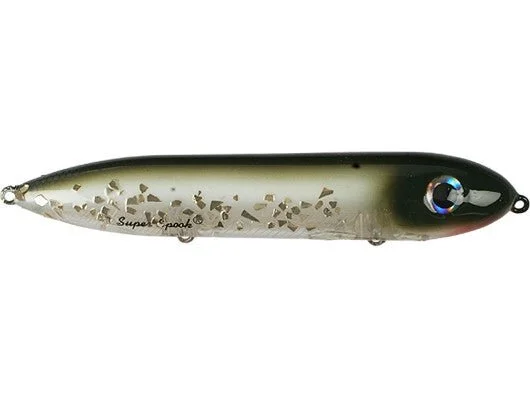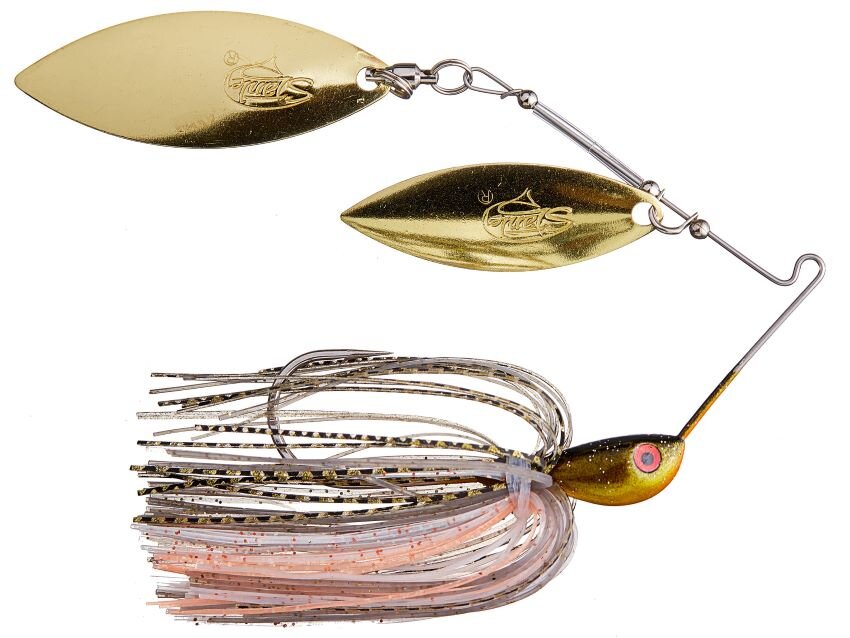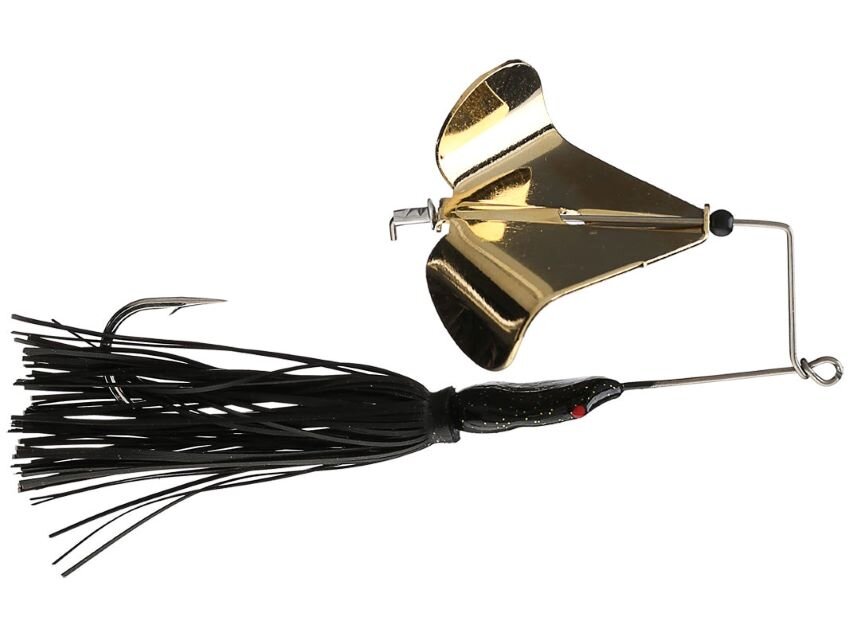Old School Lures That’ll Still Make the Trip to El Salto and Picachos
I tend to be an early adopter of fishing tackle, refreshing the “New Items” button on Tackle Warehouse at least once a day and making orders far more often than necessary. That’s led me to some key discoveries at home and abroad—for example, I’m pretty sure that I was one of the first people to fish a Whopper Plopper at El Salto, and the results were tremendously. Similarly, I’ve allowed my guides down there to show me that new entrants into an existing field, like the Berkley Warpig lipless crankbait, will sometimes outfish the standard, proven offerings.
Even though I’m constantly testing out new lures on our trips South of the Border, and attempting to give them a valid assessment, of course there will always be some “gold standard” lures that are hard to replace: The Senko is two decades old and can’t be beaten by the competition; the Fat Free Shad was introduced in 1995 and still has a place in my regular rotation; and the 10” black-and-blue Power Worm and an 8” lizard are older than that and no guide down there will let you in his boat without some of each in your possession.
Nevertheless, the introduction of new lures means that others get left by the wayside through no fault of their own. I’m as guilty of that sort of “shiny object syndrome” as anyone. I simply get distracted by the label of “new and improved,” sometimes at my own expense. You may have other longtime favorites that simply fell out of the rotation. In the meantime, here are four that regularly make the trip down to Mexico with me.
Heddon Super Spook
About a decade ago, the Megabass Giant Dog-X became my go-to walk-the-dog topwater after I traded a Japanese hollow frog to Aaron Martens for one. I continue to fish it because it’s remarkably easy to walk and elicits a lot of vicious strikes, but in recent years I’ve largely replaced it with the Teckel Kicknocker and its relatives (e.g., the Vixen and the Repoman). I should probably mix it up a little more, because I’ve seen times when not only did a particular cadence matter, but the particular walking bait made a critical difference, too. In several instances the bait that proved best was the full-sized Heddon Super Spook, which looks primitive in comparison to the others, but can be absolutely deadly. Just look on the decks of the pros’ boats when there’s a topwater bite at Champlain or Guntersville and you’ll almost always see a few, even if they don’t mention it in the press.
Stanley Vibra-Wedge and Vibra Shaft Spinnerbaits
Many people forget that Lonnie Stanley was not only a high-level tournament competitor but also one of the pioneers of spinnerbait design and development. His translucent skirts contributed to several major wins in the 80s and 90s, and the Vibra Shaft design provides more thump than other lures that look the same out of the package. The R-Bend allows them to vibrate freely, but unlike some other R-Bend spinnerbaits the Stanleys can take a licking from multiple fish and still run true. That’s critical at El Salto and Picachos, where the hard-hitting fish run straight for cover and the guides often try to lift smaller specimens into the boat by the line. You can go with standard chartreuse/white, but I also like Golden Bream and Natural Shiner, depending on cloud cover and water clarity. I keep a big bag of these inexpensively priced lures in my tackle stash on site.
Crock-O-Gator Buzzbait
My late friend Alden P. Colvocoresses (“Colvo”) introduced me to these in the mid-90s. No matter when or where he was fishing he’d almost always have the “clacker” tied on and the noise could be both distracting and hypnotic. Years later, Wesley Strader told me that a black Crock-O-Gator with a gold blade was deadly on tidal waters, and I subsequently tested out that statement with success. When I wrote about it, Bass Fishing Hall of Famer Larry Nixon chimed in that he loved them, too. I’ve never had a banner day on a buzzbait in Mexico, although I’ve certainly caught some quality fish on it. The next time I’m down there and the water is high, I’m going to fling one of these back in the flooded bushes.
Gene Larew Salt Craw
I know that flappy Speed Craws and Rage Craws are deadly. I own plenty myself, and never go to Mexico without some in both black/blue and watermelon or green pumpkin, at a minimum. That said, when I first started fishing local tournaments in the mid-1990s, one of my go-to flipping baits and jig trailers was the old school Gene Larew Salt Craw. I used the 4-inch model sometimes, but the big 5-inch and 6-inch Hawg Craws were what I used in Texas and whenever I needed a bigger bite. I learned about it from my friend and mentor Bill Roberts, who I believe was introduced to them by David Wharton and/or Chet Douthit. I ended up buying a lot of them (including a 50-pack of black with blue claws from a store in Lincoln, Nebraska) and I really need to give them a workout. The only problem is that they may be tough to replace. Tackle Warehouse doesn’t carry them, but you can still get some from Larew’s parent company and some other retailers.
And as a bonus….
I don’t remember the last time I fished a Yamamoto Hula Grub anywhere, but there was a time when I thought they were the most money bait ever made. I was introduced to them by river smallmouth guys, but later had some success using them around riprap and got my butt kicked in a tournament at Buggs Island by a partner flipping them to buckbrush. I know that I should use them more in general, but I’m not certain that there’s an ideal purpose for them in Mexico. Then again, when the water level is down, El Salto resembles the desert terrain of Arizona where the Hula Grub first gained its footing. I need to think about this one a little.
What other old and semi-forgotten lures do I need to pack on my next trip?










